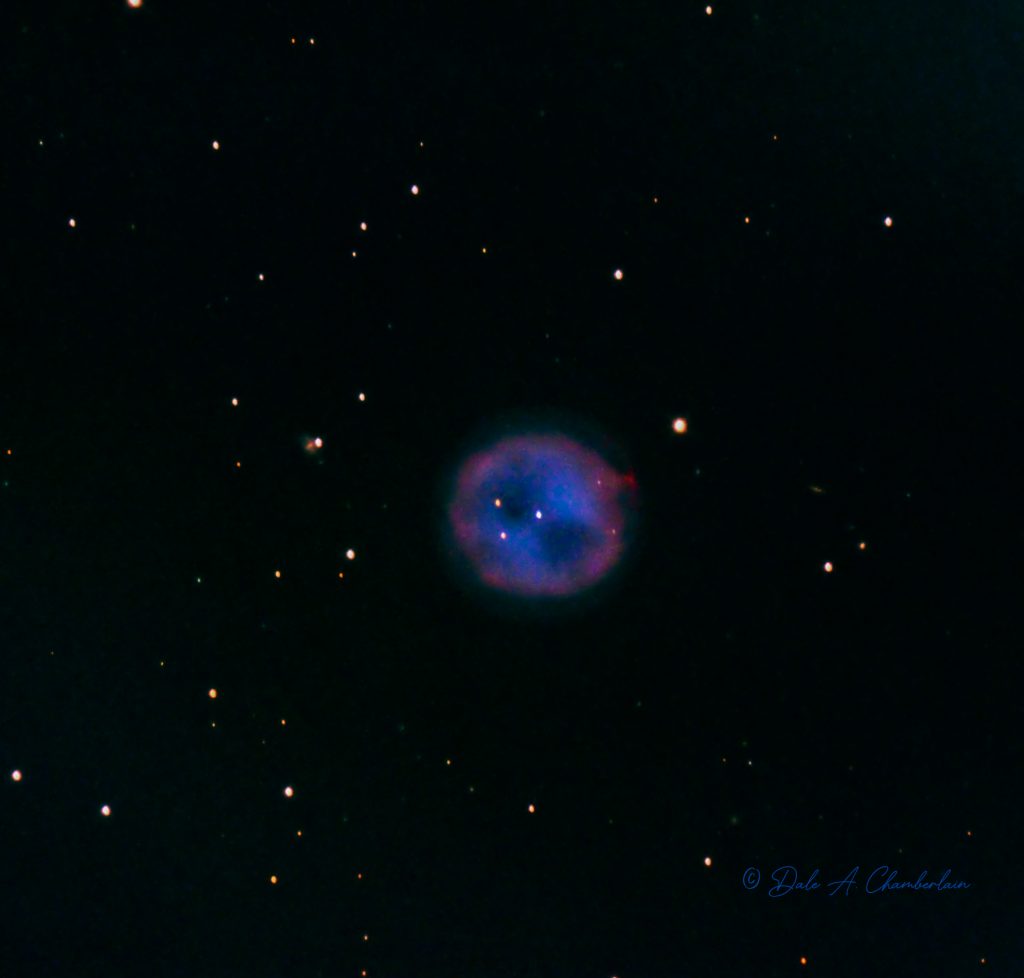
Object: The Owl Nebula (also known as Messier 97, M97 or NGC 3587) is a planetary nebula located approximately 2,030 light years away in the constellation Ursa Major. It was discovered by French astronomer Pierre Méchain on February 16, 1781. When William Parsons, 3rd Earl of Rosse, observed the nebula in 1848, his hand-drawn illustration resembled an owl’s head. It has been known as the Owl Nebula ever since.
The nebula is approximately 8,000 years old. It was formed from the outflow of material from the stellar wind of the central star as it evolved. The nebula is arranged in three concentric shells, with the outermost shell being about 20–30% larger than the inner shell. The owl-like appearance of the nebula is the result of an inner shell that is not circularly symmetric, but instead forms a barrel-like structure aligned at an angle of 45° to the line of sight.
Taken: June 13, 2019
Telescope: Astro-Tech 14” RC
Mount: Paramount ME II unguided
Camera: ZWO ASI1600MC-Pro (cooled to -15C; Unity gain) Bin 2×2.
Focuser: Moonlite Nitecrawler
Rotator: Moonlite Nitecrawler
Filters used: Luminousity on a ZWO 8 position filter wheel
Exposures: 25×180 seconds for a total exposure time of 1.2 hours; calibrated with 25 dark frames, 32 flat frames with 32 dark-flats.
Seeing Conditions:
Processed with PixInsight and Photoshop CC 2019